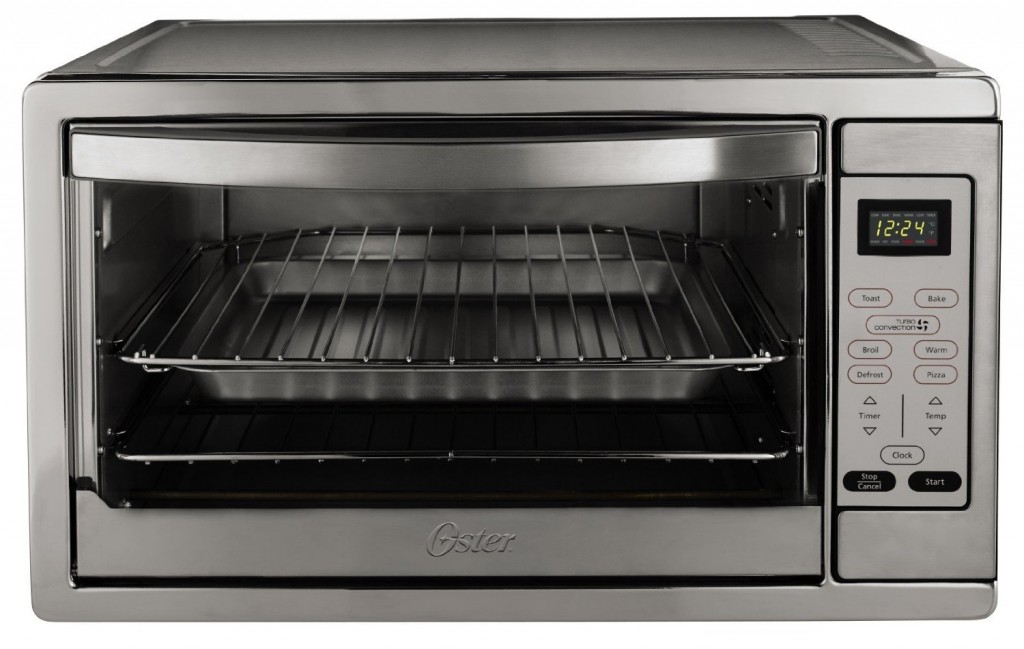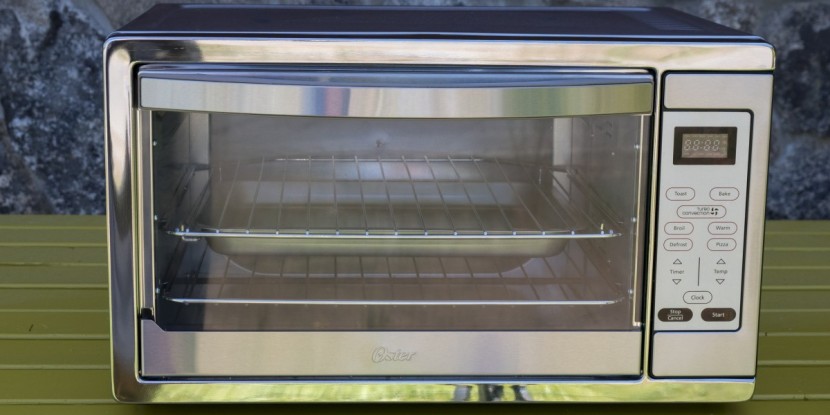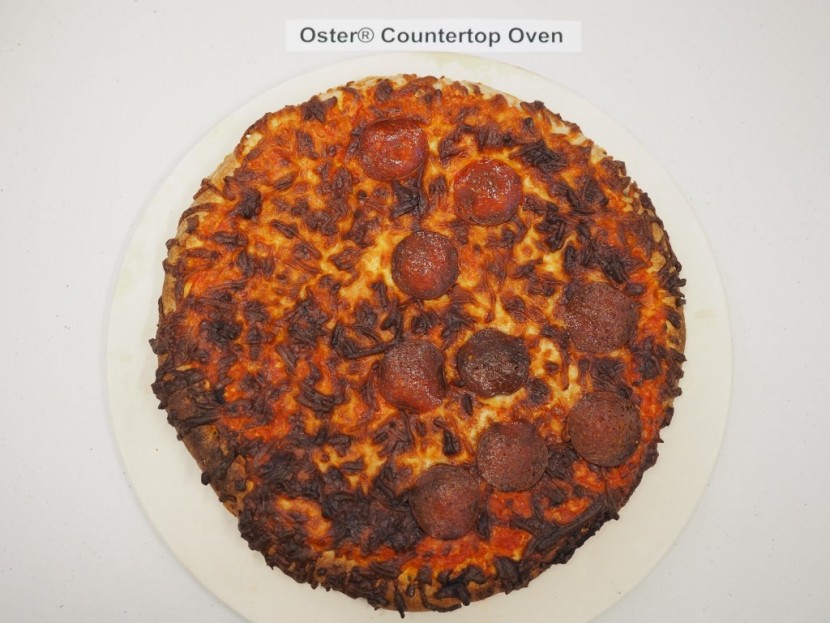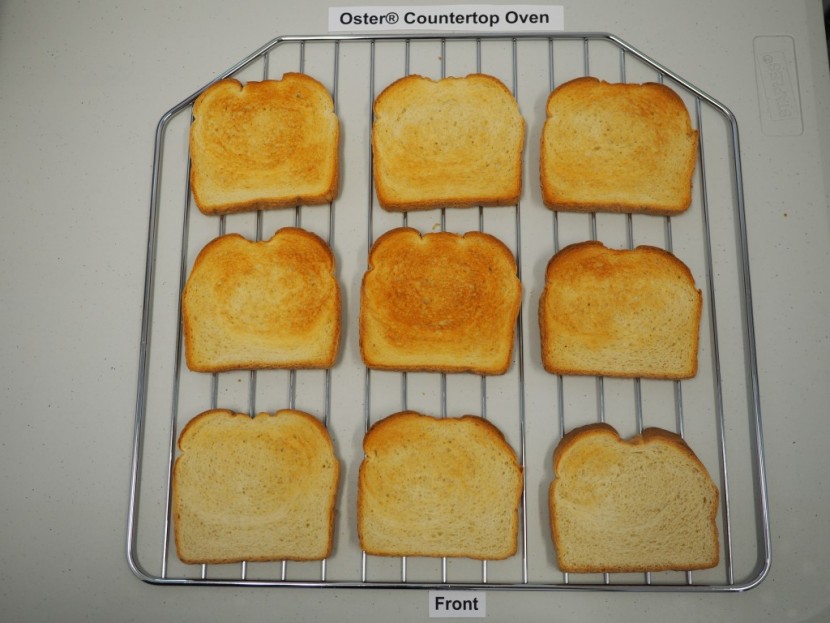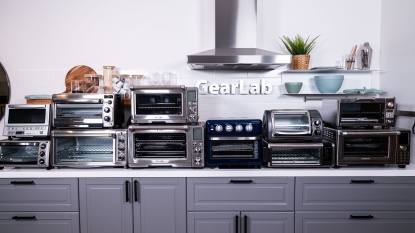Oster Extra Large Digital Countertop Oven Review
Our Verdict
Our Analysis and Test Results
The Oster is not the best kitchen appliance to add to your lineup, no matter what your goals for a toaster oven.
Baking
The Oster was the worst performer in our baking test. It scorched most of the cookies we made in it, making them borderline unappetizing. It produced similar results with cakes, cooking them unevenly, drying them out quite a bit, and burning the outside. Chicken drumsticks also came out relatively dry with splotches of burnt spots. We wouldn't say it completely ruined any of the food we baked in it, but all the other toaster ovens were able to produce more palate-pleasing results.
Ease of Use
The Oster was the only model we tested with a touch control panel rather than buttons. This is similar to the controls you would find on cheaper microwaves with no raised buttons, just a flat piece of rubbery feeling material with buttons printed on it. It was incredibly hard to press these 'buttons' on the Oster, often taking multiple attempts. This, combined with the fact that there was no audible feedback when a button was pressed, made it very difficult to tell if the oven had recognized our commands. It has individual buttons to select each of its six cooking modes: toast, bake, broil, warm, defrost, and pizza. Conspicuously absent is a bagel function, and it doesn't provide a countdown timer when in toast mode. Oddly, the oven does not indicate when it's done preheating. The manual suggests turning it on for seven minutes before putting food in if you want to preheat, but our testing found indicated that the oven did not get up to temperature in that amount of time. This additional step felt unnecessary and lost the Oster a lot of points in our test. Additionally, the convection fan was the loudest of the bunch, the only one that was loud enough to be annoying.
Temperature Accuracy
The Oster was at the bottom of our temperature accuracy testing. The oven was constantly above our set temperature of 350˚. After 15 minutes of reaching our set temperature, it was already 10˚ above, and at 30 minutes, it was 25˚ over the set temperature. At temperature test settings of 400˚ and 450˚, it ran 25˚ hotter each time. This could be part of why it tended to burn a lot of the food we made in it.
Frozen Foods
The Oster received an average score in our frozen meal preparation test, putting it right in the middle of a closely packed field. It cooked frozen pizzas fairly evenly but often burned crusts and over browned the cheese and pepperoni. If you don't like crunchy pizza, you may want to reduce the time or temperature in the Oster. Tater tots came out a bit better, with dark but not burned outsides and chewy insides.
Toasting
The Oster again received the lowest score for toasting. Even on medium shade settings, it often burnt the edges of bagels and toasted the backside quite a bit. We were able to get better bagel results from some traditional slot toasters, which don't generally excel in this capacity. The Oster's large size means you can shove a lot of bread into it, but our toast map showed it to have a tiny toasting sweet spot in the center of the oven. Any bread not in the exact center was quite neglected and barely toasted.
Should You Buy the Oster?
The Oster differentiates itself from other toaster ovens through its larger size, but we found it to underperform in all the tasks you would want a toaster oven to complete. The Oster is one of the more affordable models we tested. However, the top toaster ovens provide much better performance at the same or lower price. Unless you really want the larger size of the Oster, we wouldn't recommend it.
What Other Toaster Oven Should You Consider?
Almost any option in the review performs better than the Oster. If the Oster is intriguing thanks to the price range, the Breville Mini Smart Oven has a similar price and outperformed the Oster in every testing metric. As long as you don't want to cook pizzas over 11 inches, then you should be happy and good to go.


